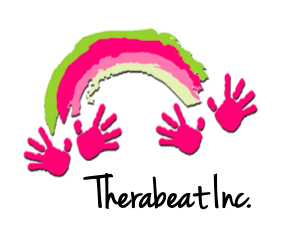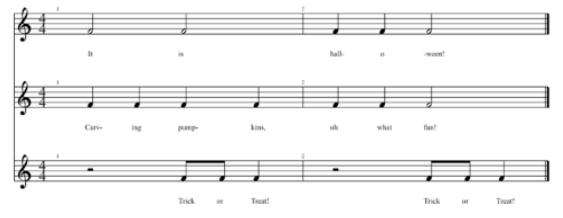Autism spectrum disorder (ASD) is a neurodevelopmental condition that is characterized by pronounced difficulties in social communication and relational interactions, limited areas of interest, and repetitive and/or stereotypical behaviors (Salomon-Gimmon & Elefant, 2019, p. 174). Autism is considered a spectrum disorder because it affects individuals differently and in varying degrees (Adamek et al., 2008, p. 117). However, common characteristics include communication deficits such as lack of expressive speech, lack of social skills, sensory processing issues, and behavioral issues (Oldfield, 2013, p. 24). Infants may show signs of autism spectrum disorder as early as 12 months but are not typically diagnosed until around the age of 3 (Adamek et al., 2008, p. 117). Autism has become more prevalent throughout the years and currently affects 1 in every 110 American children (Lim, 2011, p. 20).
Autism spectrum disorder affects the ways in which information is processed in the brain. A child on the autism spectrum may have difficulty processing receptive language and/or using expressive language to convey thoughts and needs. A common communicative symptom exhibited among this population is echolalic language, in which the individual repeats words or phrases heard without any intent to interpret meaning (Adamek et al., 2008, p. 117). A child with autism may have a language acquisition delay in comparison to non-diagnosed peers, and some individuals may remain non-verbal into their adult lives (Vaiouli & Andreou, 2018, p. 323).
A prominent characteristic displayed in individuals with autism spectrum disorder is a deficit in social skills. The development of social skills is essential in early childhood in order to be successful in the classroom setting and in the community. This importance of social skills continues throughout adolescence and adult life in order to participate in activities of daily living. Core deficits found among individuals with autism are difficulty starting social interactions, difficulty maintaining interactions, and difficulty comprehending nonverbal social cues given by others (Adamek et al., 2008, p. 123).
Researchers have shown strong similarities between language processing and music interpretation in the brain. Music and speech have been found to share the same processing pathways within the brain (Lim, 2011, p. 18). Both music and speech have been found to elicit reactions in the Broca’s area, Wernicke’s area, and auditory cortex among other sites in the brain (Flaherty, 2017, para. 2).
A 2004 study investigated whether prior music training influenced speech and music processing in the brain (Schon et al., 2004). Participants were supplied with recordings of sentences that contained a wrong word and musical excerpts that contained a wrong note. Brain imaging results found that participants with a musical background were able to accurately decipher inaccuracies in speech and melody as compared to the participants with no prior musical knowledge. Additionally, those participants with musical knowledge were able to decipher these inconsistencies at a faster rate than their counterparts. This study is one of many that shows music and speech being processed in the same brain areas along similar neural pathways.
Music therapy is an effective method for assisting in the acquisition of communication skills among children with autism spectrum disorder (Lim, 2011, p. 17). Music therapy has been shown to provide more unique and novel experiences in which a child may become more engaged when working towards goals (Carpente, 2017, p. 161). Additionally, studies have indicated that children with autism may have a stronger attraction to music when compared to normal-aged peers (Carpente, 2017, p. 161). In this treatment, communication and speech goals can be addressed in a non-threatening and fun environment. Using music as a therapeutic medium provides a structure that allows for reciprocal interactions and flexibility (Carpente, 2017, p. 161).
Several researchers in the music therapy field have studied the effects of music therapy interventions on the communication skills of children with autism. Carpente (2017) found that using child-lead musical improvisations led to an increase in the child’s engagement, purposeful communication, problem solving, and behavioral organization. A 2013 study compared the effectiveness of traditional speech therapy against music therapy in eliciting speech sounds in nonverbal children with autism (Sandiford et al., 2013). Researchers found that the participants enrolled in the music therapy treatment showed a greater speech production at a faster rate than participants in speech therapy (Sandiford et al., 2013).
A popular music therapy intervention that has been used to elicit verbal speech in children is therapeutic singing using the client’s preferred music. This intervention involves pausing periodically while singing to prompt the client to respond with the correct word of phrase that will follow. For example, if a client’s preferred musical choice is “Twinkle Twinkle Little Star,” the music therapist could insert a musical pause before singing “star” in order to prompt the client to sing the last word. This intervention allows for the client’s brain to process the patterns and predictability of the music in order to finish the ends of phrases.
Autism spectrum disorder (ASD) affects a child’s receptive and expressive language to varying degrees. It is currently estimated that as many as 40% of children with autism are nonverbal. Music therapy has been shown to encourage verbal responses from these individuals. Music therapy can be used as a springboard to ultimately elicit purposeful communication and social skill development.
-Jasmine Bailey, Music Therapy Intern
References
Adamek, M.S., Thaut, M.H, & Furman, A.G. (2008). Individuals with autism and autism spectrum disorders. In D. Williams, K. Gfeller & M. Thaut (Eds), An introduction to music therapy: Theory and practice, 3rd edn. American Music Therapy Association.
Carpente, J.A. (2017). Investigating the effectiveness of a developmental, individual difference, relationship-based (DIR) improvisational music therapy program on social communication for children with autism spectrum disorder. Music Therapy Perspectives, 35(2), 160-174. http://dx.doi.org.gcsu.idm.oclc.org/10.1093/mtp/miw013
Lim, H.A. (2011). Developmental speech-language training through music for children with autism spectrum disorders: Theory and clinical application. Jessica Kingsley.
Flaherty, S. (2017, August 30). Music and language. Music Therapy Center of California. https://themusictherapycenter.wordpress.com/2017/08/30/music-and-language/
Oldfield, A. (2013). Music, language, and autism: Exceptional strategies for exceptional minds. Jessica Kingsley.
Salomon-Gimmon, M., & Elefant, C. (2019). Development of vocal communication in children with autism spectrum disorder during improvisational music therapy. Nordic Journal of Music Therapy, 28(3), 174-192.
Sandiford, G., Mainers, K, & Daher, N. (2013). A pilot study on the efficacy of melodic-based communication therapy for eliciting speech in nonverbal children with autism. Journal of Autism and Developmental Disorders, 43(6), 1298-1307. http://dx.doi.org.gcsu.idm.oclc.org/10.1007/s10803-01201672-z
Schön, D., Magne, C., & Besson, M. (2004). The music of speech: Music training facilitates pitch processing in both music and language. Psychophysiology, 41(3), 341-349.
Vaiouli, P., & Andreou, G. (2018). Communication and language development of young children with autism: A review of research in music. Communication Disorders Quarterly, 39(2), 323-329. http://dx.doi.org.gcs.idm.oclc.org/10.1177/1525740117705117







